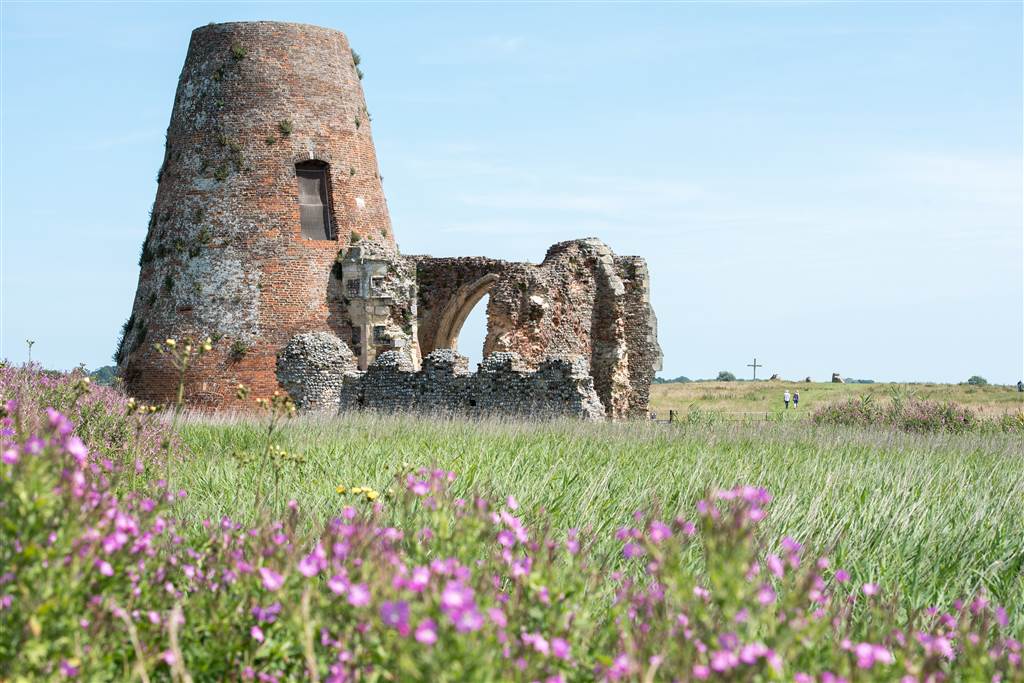

Norwich Castle Keep is reopening in summer 2024 after a multi-million-pound redevelopment.
The Royal Palace Reborn project takes the keep back to its medieval past but in a contemporary way, so that as many people as possible can delve into its history, its nooks and crannies, and its significance for Norfolk and the Broads.
The origins of the castle keep, the stone building we see today, which was restored in Victorian times, actually go back 950 years, to medieval times. This was also the period that saw the creation of one of the most distinctive parts of the Broads landscape we know today – the shallow lakes interconnected by rivers and dykes (smaller waterways) that we call broads.
William I (William the Conqueror) ordered work to begin on the castle in 1067 and in 1121 the keep was completed. It was intended to be a royal palace, not a defensive building. Over the medieval period the castle was also the centre for legal and financial rule over the region.
Meanwhile in the Broads, peat digging was getting under way. From around the 12th-14th centuries, the demand for timber and fuel was so high that most woodland was felled, and peat was dug to provide an alternative fuel for heating and cooking. Documentary evidence from Norwich Cathedral (another wonderful medieval building to visit) shows that substantial amounts of peat were dug, in a region that was then one of the most highly populated parts of the country. Rising water levels then flooded the peat diggings, forming the broads. Doctor Joyce Lambert was the first to establish the origin of the broads, leading to publication in 1960 of The Making of the Broads. You can listen to a recording of Joyce Lambert talking about her discovery at Broads voices (broads-authority.gov.uk).
To find out more about ‘The Story of Peat’, visit the new exhibition at the Museum of the Broads at Stalham. The exhibition has been funded through Farming in Protected Landscapes (FiPL). To find out more about FiPL projects, and how important peat is now and for the future, go to Farming in Protected Landscapes (broads-authority.gov.uk).
A key place to visit in the Broads to step back to medieval times is the remains of St Benet’s Abbey on the River Bure, where you can discover the world of the medieval monks. Artefacts from the abbey will be on display in the castle’s new Gallery of Medieval Life. There are moorings at the abbey or you can walk there from Ludham Bridge or Ludham village (there’s also a very small accessible car park). Tours take place at the abbey from June to September, every Wednesday and Saturday at 2pm. Other places to visit in the Broads that will take you back to the medieval world include the many churches with medieval origins, such as St Helen’s at Ranworth, known as the cathedral of the Broads.

Back at the castle, over the centuries it evolved to become a prison and then a museum, which has itself been through many changes. The latest changes take it back to its origins, reinstating the medieval floors and rooms in the keep, through a major engineering, construction and redevelopment project, with finance from the National Lottery Heritage Fund. There’s also a new visitor entrance, cafe and shop for the museum site. From when the keep reopens in summer 2024, these newly accessible spaces will mean that for the first time in 900 years visitors can explore all five levels of the keep – from basement to battlements and from there take in the spectacular views.